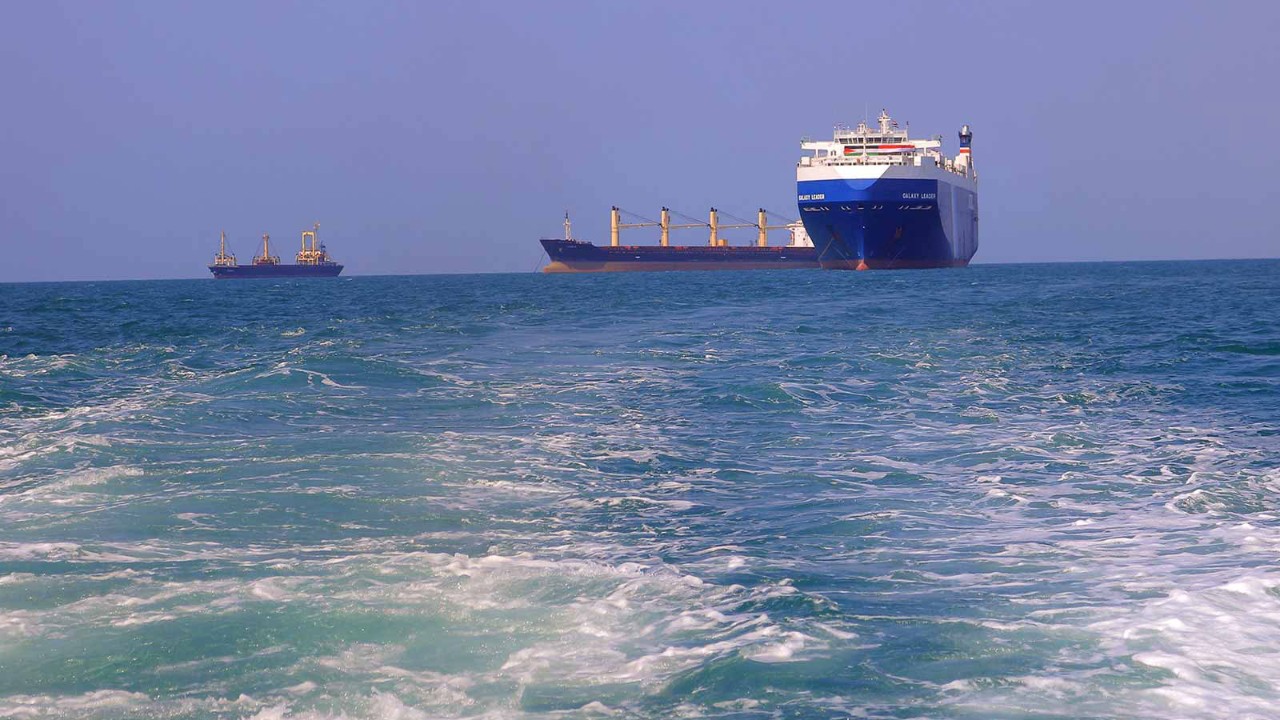
It must feel like Groundhog Day for global businesses. In the past few years, executives have been forced to contend with some of the most severe disruptions to supply chains in modern economic history. The national lockdowns that followed the outbreak of the Covid-19 pandemic slowed or halted the flow of both inputs and finished goods. Russia’s invasion of Ukraine drove up fuel prices around much of the globe, with acute shortages particularly impacting Europe’s energy-intensive auto makers, steel foundries and chemical manufacturers.
Now another challenge of global proportions has arisen. Attacks by Houthi rebels in Yemen have disrupted the Red Sea shipping route, which normally carries around 12% of global trade with a value of more than $1 trillion every year. The implications for companies are potentially wide-ranging, especially if the incidents persist. Over 500 container ships that would have sailed through the Red Sea have been diverted around the southern tip of Africa, adding anywhere between nine days and two weeks of travel time, depending on the estimate. That is roughly a quarter of the world’s container-shipping capacity.
The crisis has implications for balance sheets and cashflow
Uncertainty
That’s a headache for finance directors and chief financial officers. Not only does it crank up shipping costs but it also potentially delays production or requires increased inventory levels as more goods and inputs spend longer in transit. The crisis then has implications for balance sheets, cashflow, and profit and loss accounts. It has also raised fears that a renewed spike in inflation could delay or slow rate cuts by major central banks, keeping borrowing costs higher for longer. The question is: how serious is the threat? And following on from that: how can businesses minimise the risks?
‘A key uncertainty for businesses is the duration of the conflict,’ says Ben May, director of global macro research at Oxford Economics. ‘Clearly, the longer this drags on, the bigger the risk.’ At present, even informed commentators appear unwilling to hazard a guess on this point. Vincent Clerc, chief executive of shipping giant Maersk, recently told the Financial Times that restoring safe passage through the Red Sea could take ‘days, weeks or months’.
The impact is already being felt by many businesses. In the first few weeks of 2024 the cost of shipping jumped worldwide, with the Drewry World Container Index Global Composite rising 173% in the year to date. A range of other measures of transit costs – especially shipping goods between Asia and Europe – have also soared.
‘Higher shipping costs should not be visible to most consumers’
Grounds for optimism
From an economic perspective, this might not be as bad as it sounds, according to Paul Donovan, chief economist at UBS Global Wealth Management. Shipping costs, he points out, account for only about 0.3% of costs paid by consumers. ‘It is worth remembering that when a consumer buys something, most of the price is paid for what happens after goods arrive at a port – everything from internal distribution, advertising, wholesale and retail costs,’ he wrote in a briefing note. ‘These higher shipping costs should not be visible to most consumers.’ And despite the recent hike, shipping costs are still well below levels reached during the pandemic lockdowns.
Finally, although liquefied natural gas does travel to Europe via the Red Sea, prices are at their lowest since August 2023. The price of Brent crude has risen recently, amid fears of attacks on oil tankers. However, Brent remains well below its recent highs in September-October 2023, and reductions in oil output related to the shipping problems look unlikely.
The upshot, Donovan concludes, is that the crisis in the Red Sea is not likely to lead to a renewed acceleration of inflation or cause central banks to scale back rate cuts in 2024.
The hit
But this does not mean that many companies won’t face problems. ‘The issue will be most severe for companies that ship bulky and low-value objects – such as low-end fridges,’ says May. ‘You can’t fit so many of these in a 40ft container, and suddenly adding thousands of dollars to shipping costs could be significant. If you are talking about high-end cell phones or microchips, a business is cramming far more value into the container, so the hit is going to be lighter.’ For such high-value good or inputs, more costly forms of transport – including air – might start to make sense.
For some companies with long or complex supply chains, production has already been disrupted. Carmakers Volvo and Tesla have been forced to suspend production at plants in Europe by an inability to source components from Asian suppliers. Swedish home furnishing company Ikea has also warned of delays.
Many may redouble efforts to increase supply chain resilience
The renewed shock to the system could also convince many executives to redouble efforts to increase the resilience of supply chains, which may have lost urgency as past disruptions waned. This can be done in a variety of ways. Companies can increase inventories of inputs, making it easier to cope with. Returning production closer to home, nearshoring, has also become more viable, especially as factory automation has lowered costs even in high-wage countries like Germany.
However, such changes seldom come without a price tag. ‘This is a trade-off,’ May argues. ‘If you have a year of input supplies stored in a warehouse, this is pretty pricey; a month of supplies less so.’ Equally, fragmenting supply chains for optimal safety would be more expensive than adding in a few new suppliers. ‘It’s a bit like building a flood barrier,’ May explains. ‘The key question for companies is whether they want to build their defences for a once in a decade crisis or a once in a century crisis.’
More information
For more supply chain articles by AB, see Reshaping the supply chain and New supply chain tactics



